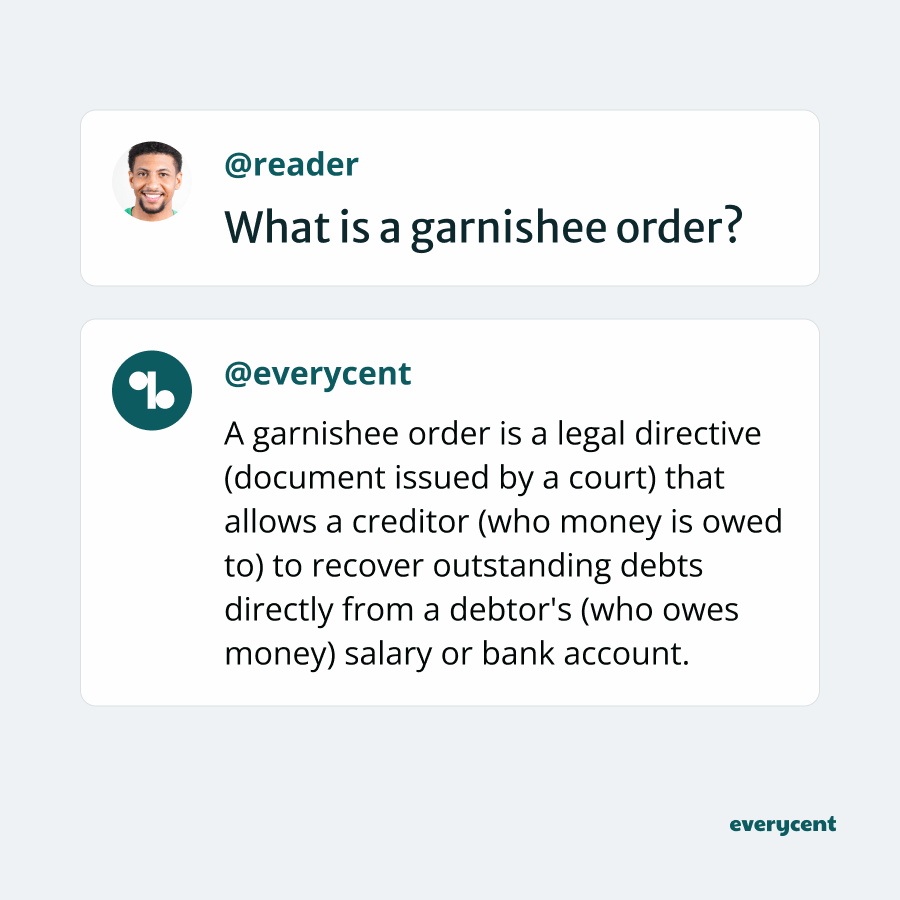
A garnishee order is a legal document, which makes it a big deal. But what is a garnishee order, how long is it valid for, and what impact does it have?
Written by Reviewed by
Thanks for checking out this post. We help South Africans manage debt, protect their assets, and restore their finances.
to learn more.If you’re unfamiliar, then it’s not obvious what a garnishee order is.
And it’s a very important document.
In fact, it’s one of the most reliable ways for creditors to collect outstanding debts.
Sounds like a big deal, right? It is.
We’ll try and simplify it for you.
A garnishee order is a court-issued legal document that enables a creditor to collect debts directly from a debtor’s bank account or salary. It is an attachment of debt that allows the recovery of owed money by bypassing the debtor’s direct payment.
It means that if someone owes money (known as the debtor) and can’t or won’t pay it back, the court can issue a garnishee order that helps the person [or company] money is owed to (known as the creditor) to get their money back.
This order tells the bank or employer to send part of the debtor’s salary or money in their bank account directly to the person they owe money to. This way, the creditor gets paid back directly without waiting for the debtor to pay.
 a garnishee order?" width="900" height="900" />
a garnishee order?" width="900" height="900" />
It’s worth noting that there are two orders that can help creditors to recover debt. Each with a distinct application.
An Emoluments Attachment Order (EAO) is specifically for taking money directly from someone’s paycheck when they owe a debt. ‘Emoluments’ means profits, salary, or fees from office or employment.
A Garnishee Order for debts is broader and can collect the outstanding money from different sources. This includes bank account funds, rental income, dividends from investments, or any other payments due to the debtor from third parties (‘garnishee’).

Both orders are governed by the Magistrates’ Court Act of 1944 in South Africa.
Garnishee Orders are covered under Section 72 and Emoluments Attachment Orders (EAOs), under Section 65J.
Furthermore, the National Credit Act 34 of 2005 helps make sure that when these orders are used to collect debts, it’s done fairly and won’t cause undue hardship to the person who owes money.
There isn’t a specific amount that a garnishee order [or EAO] may deduct. Instead, The Magistrates’ Court approves or adjusts the amount on a case-by-case basis after taking the debtor’s financial situation and cost of living into account.
For salary deductions, 25% to 30% of the debtor’s net salary is commonly referenced as a guideline.
Another thing to take into account is the accumulation of legal fees.
According to the National Credit Act (NCA) in South Africa, “collection costs” include all legal fees that the creditor incurs during this process. These costs apply for as long as a consumer remains in default under the credit agreement.

Struggling to pay your debt bills?